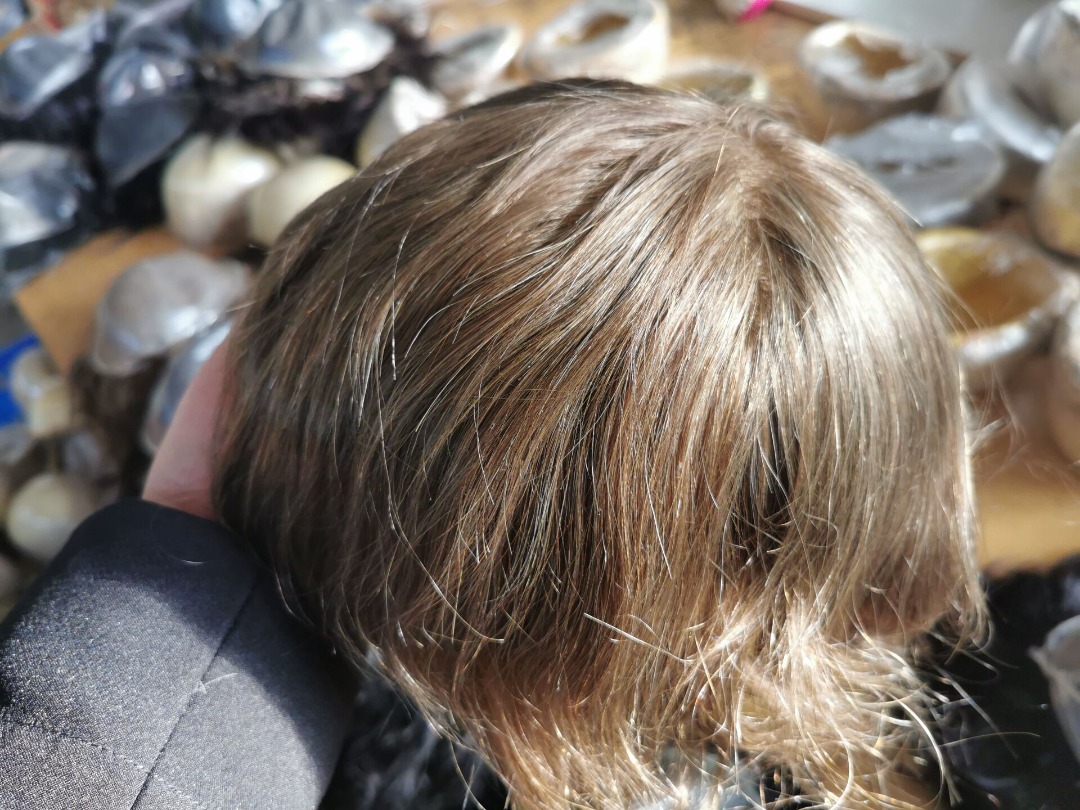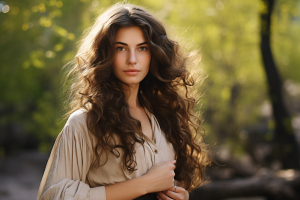HOW HUMAN HAIR WIGS ARE MADE: A STEP-BY-STEP GUIDE

Many people wear human hair wigs either for fashion purposes, medical reasons or for the ability to change their hairstyles frequently. The market for human hair wigs is huge however many lack insight into how they’re actually made. The craft of making wigs has been around for hundreds of years. The process has been refined and perfected over the years. Today, we can buy wigs that are so well made that it can be difficult to tell if someone's beautiful hairstyle is their own hair or a wig.
This article will take you through, step by step, how luxury human hair wigs are made, where the hair comes from and finally the finished product.These days wigs come in all styles ,and shapes sizes for everyone.
Wigs are basically divided into four categories:
Monofilament
Monofilament is a wig cap structure over which a layer of transparent micromesh is inserted, either in the parting, crown, or top area. Each strand of hair is then individually tied by hand to this layer of mesh to mimic natural hair growth.These wigs are light and durable and they replicate the natural way the hair moves from the scalp.
Lace-Front
Designed to mimic a natural hairline, the lace on the front of these wigs adds authenticity to your style and looks most natural when it blends in with your skin tone.
Hand-Tied
Hand-tied wigs can either be synthetic wigs or custom human hair wigs and each hair is sewn to the mesh by hand. They are versatile and very light.
Wefted or Open-Cap
This type of wig is usually synthetic and the most affordable. They are perfectly suited to the occasional wearer but aren’t very versatile.
Steps: How Your Natural Human Hair Wigs are Made
Machine-made wigs usually go through similar steps and processes, and the finished product is made faster, while hand-made wigs take longer and are often customized to the customer's head shape. Here's how a human hair wig is made.
The following steps reflect the process of creating a perfectly fitting, hand-tied natural wig:
1. Preparing the Human Hair
Before the hair can be made into a magnificent wig, the hair first needs to be prepared carefully. After sorting all of the hair it will be put together in one bunch, with all the strands facing the same direction.Some wigmakers will organise the hair into pilge, one pile containing “root down” hair, and another containing “root up” hair. Each bundle is washed, combed and disinfected gently to ensure no impurities are left. At this stage, hair is either left natural or permanently style, straightened or curled, to suit the desired wig style. If hair colour isn’t uniform, the strands are coloured to create a more natural look. After rinsing the hair, it is carefully dried with towels whereafter it is dried.
2. Developing the Wig Pattern
In order to create a well fitted wig that is safe, natural looking and not loose, the foundation of the wig is formed to a mould ensuring the wig fits comfortably with no irritation.Tie up and clip the guest's hair. Generally, girls have a very low chance of total baldness. They need to tie up their hair before wearing wigs like loose wave hair. Then cover the top of the head with plastic film to simulate the shape of the head.Secure the plastic film with tape. Once fixed, record the position of the hairline and center point. After removing the plastic head, the barber will draw the direction and length of the hair in each area based on the hairline and the position of the hair.Then fix the plastic head shape on the special wood head model. Use a nail to pierce the previously drawn partitions, then remove the plastic head shape and draw a line on the wood head, so that the real person's hair information can be transferred to the wood model.
3. Process hair
Workers put the collected hair into a disinfection tank to disinfect it, and then soak it in different colors of dye for an hour before taking it out.
4. Grade hair
If viewed under a microscope, there are many small scales superimposed on the outermost layer of human hair, and these hair scales will grow in the same direction and will be very straight. However, collected hair tends to be wrapped together, and the hair scales are oriented differently, so they tangle together. Therefore, you need to manually comb your hair to make it soft. This link is also called grading hair. First, the workers tidy their hair by hand and then comb it on a pull plate filled with long steel needles. After several times of straightening, the finished hair is tied into a small bundle and placed in the frame for the next link.
5. Laying the Foundations
The edges and the crown of the wigs foundation is layered onto the mould with fine mesh silk netting to match the hair colour of the wig and sewn firmly in place together with silk ribbon to match the colour of the foundation. All of these are held together with cotton thread through anchor points.
6. Knotting the Hair
Knotting is the process of attaching a single strand of hair onto the foundation using a variety of different techniques. A full wig requires 30,000 to 40,000 knots, which take a total of about 40 hours in total, which is one of the reasons why human hair wigs can be slightly more expensive. The next step is a permanent look - whether it's curling or straightening.The most important link - the hair knot. The worker uses a hair knitting needle with a little hook so that as long as one hook, a strand of hair can be hooked from one side of the hair sleeve to the other side through a small hole.
First, the worker would choose the right length of hair, then hook it up with one hand and turn it around with a crochet hook with the other. In a blink of an eye, a strand of hair is woven into a cap, with more than 200 hairs hooked per square centimeter. In order to make the wig more realistic, workers will weave the hair according to the hair potential of different hair areas. Different hair hook methods can also make hair more layered, which is the main reason why human hair wigs look so natural.
7. Styling the wig
The finished wig will be attached to a soft hair clip so that styling techniques can be performed. In this technique, hair is soaked, combed, dried in an oven, and then styled, such as straightening, curling, or cutting. The final step, and arguably the most important step in wig making, is styling. And that's where the fun comes in, because wig makers now have the opportunity to create those sweet curls, wonderful waves or silky straight hair on wigs. Although a human hair wig can be styled after heating, the basic style of the wig is created at this step.









































